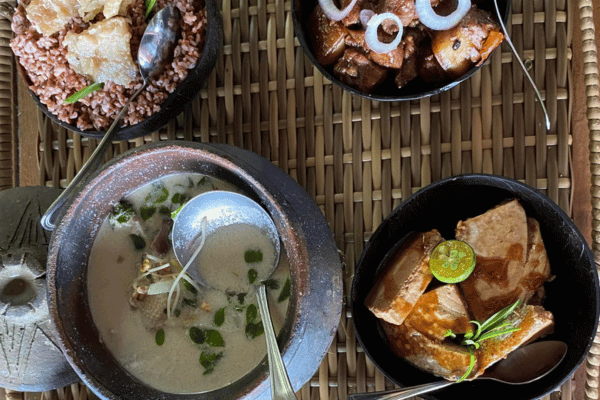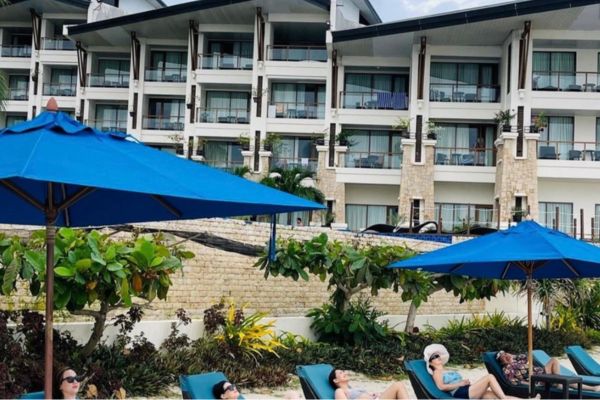Eco-Friendly Travel in Bohol: A Sustainable Tourism Guide
| Key Takeaways | Description |
|---|---|
| Eco-Tourism Leadership | Bohol is a leader in eco-tourism, showcasing sustainable practices across its tourist destinations, from the Chocolate Hills to the white-sand beaches of Panglao. |
| Conservation Efforts | The Tarsier Sanctuary and the Giant Clam Project highlight Bohol’s commitment to preserving its natural and marine biodiversity. |
| Eco-Adventures | Island-hopping tours, Loboc River cruise, and stand-up paddleboarding in the Loboc River offer immersive experiences that connect tourists with Bohol’s natural beauty while promoting eco-friendly practices. |
| Sustainable Initiatives | Panglao International Airport’s use of solar panels and LED lights, along with eco-farms and organic dining options, underscore Bohol’s dedication to sustainability. |
| Community Impact | By choosing eco-friendly travel options, visitors contribute to the preservation of Bohol’s environment and support local communities, aligning with the Department of Tourism’s goals for sustainable tourism. |
Gateway to Bohol: Panglao International Airport
The Panglao International Airport stands as a testament to Bohol’s commitment to sustainable development. As the Philippines’ first eco-airport, it incorporates green technologies and sustainable practices in its operations, such as solar panels and LED lights, minimizing its carbon footprint and serving as a model for sustainable infrastructure in tourist destinations. This eco-conscious gateway welcomes travelers to the island of Bohol, offering them a glimpse into the eco-friendly practices that make Bohol a unique and lovely place to visit within the Central Visayas region.

The Jewel of Ecotourism: Chocolate Hills
The Chocolate Hills, over 1,200 unique geological formations, change from green to brown in the dry season, resembling vast fields of chocolate. Beyond their beauty, these hills symbolize Bohol’s natural heritage and ecological diversity. Efforts to preserve this natural marvel are significant, highlighting the importance of conservation in ensuring future generations can enjoy Bohol’s wonders. The surrounding areas, rich in biodiversity, become a living classroom for visitors and locals alike, offering a glimpse into the flora and fauna of the hills of Bohol.
Conserving Wildlife: Tarsier Sanctuary

The Tarsier Sanctuary in Corella is a cornerstone of Bohol’s wildlife conservation efforts, focusing on the protection of the Philippine tarsier, one of the world’s smallest primates. This sanctuary provides a safe haven for tarsiers, helping to prevent their extinction while offering educational experiences for visitors. Here, you can witness these nocturnal creatures in a natural setting, a unique experience that underscores Bohol’s commitment to conserving its nature and animals. The sanctuary is a key attraction for eco-tourists and contributes significantly to Bohol’s reputation as an eco-friendly destination.
- Observation Areas: Designed to minimize human impact, these areas allow visitors to see tarsiers in their natural environment without disturbing them. Guides share insights on tarsier behavior, emphasizing the importance of quiet and respect, hence the name ‘Tarsier Sanctuary.’
- Conservation Education: The sanctuary educates visitors about the challenges tarsiers face, including habitat loss and predation, and the steps being taken to conserve them. Interactive displays and talks highlight the importance of eco-friendly practices, showcasing the efforts of the Department of Tourism and local conservationists.
Underwater Paradise: Snorkeling in Panglao
Panglao Island, known for its stunning beaches but also as a gateway to an underwater paradise, is a highlight of the Bohol tourist experience. Snorkeling in Panglao is an eco-friendly way to explore the vibrant marine life, designed to promote the conservation of Bohol’s rich underwater ecosystems. The crystal-clear waters and white-sand beaches of Panglao offer a glimpse into the biodiversity of the Bohol Sea, making it a must-visit for anyone looking to explore the natural beauty of the Philippines’ islands.

- Eco-Friendly Snorkeling Practices: Tour operators emphasize the importance of not touching the coral or marine life, reducing the impact on the reef. Visitors are encouraged to use biodegradable sunscreen to protect the water quality, reflecting the eco-tourism values shared across Bohol’s tourist destinations.
- Marine Life Diversity: Snorkelers can expect to see a wide array of species, from colorful coral gardens to schools of tropical fish, sea turtles, and even giant clams. Each snorkeling spot offers a unique glimpse into the biodiversity of Bohol’s waters, far as the eye can see, showcasing the island’s commitment to preserving its marine life and coral reefs.
Eco-Adventures: Bohol Tours
Bohol is not just about serene landscapes and underwater beauty; it’s also a playground for eco-adventures that bring tourists closer to nature while promoting sustainability. As Bohol is also a hub for eco-tourism, these tours around the island showcase the best of Bohol’s natural attractions, from the white-sand beaches of Alona Beach to the rice terraces and sights and sounds of the Loboc River, making it a sought-after destination for tourists seeking sustainable travel options.
- Island-Hopping Tours: Discover the pristine islands around Bohol, like Balicasag and Pamilacan, where eco-guides share insights on marine life and conservation efforts. These tours often include snorkeling stops, allowing visitors to witness the vibrant coral reefs firsthand, showcasing the island of Bohol as a leading destination for sustainable tourism in the Philippines.
- Loboc River Cruise: A journey along the Loboc River offers a peaceful way to enjoy Bohol’s natural scenery. The cruise emphasizes eco-friendly practices, such as serving organic local cuisine and using boats that minimize environmental impact. Visitors can enjoy the lush greenery of the riverbanks and the unique opportunity to see local wildlife in their natural habitat, further cementing Bohol’s reputation as a natural paradise.
- Stand-Up Paddleboarding in the Loboc River: For those looking for a more active adventure, stand-up paddleboarding along the Loboc River provides a unique perspective of Bohol’s natural landscapes. This activity promotes health, balance, and an intimate connection with nature, all while adhering to principles of minimal environmental impact, reflecting the eco-friendly ethos that defines Bohol’s tourist experiences.
Craving for more activities in Bohol? Click here.
Preserving Marine Life: The Giant Clam Project
In an effort to restore and protect marine biodiversity, Bohol has embarked on the Giant Clam Project, a conservation initiative aimed at increasing the population of giant clams in the Bohol Sea. This project is a testament to the island’s commitment to marine life conservation, showcasing Bohol’s efforts to maintain its biodiversity amidst the challenges of mass tourism and environmental threats.
- Conservation and Restoration: The project involves breeding and nurturing giant clams in protected areas, then relocating them to their natural habitats. This not only helps to increase their numbers but also enhances the overall health of the coral reefs, demonstrating Bohol’s dedication to sustaining its marine ecosystems for future generations.
- Educational Tours: Visitors can take guided tours to learn about the importance of giant clams in marine ecosystems, the challenges they face, and the efforts being made to conserve them. These tours provide a hands-on learning experience about marine conservation, aligning with Bohol’s goal to educate visitors on the importance of eco-tourism and environmental stewardship.
Wondering how you can help by being a responsible tourist? Click here for more information.
Eco-Farms and Organic Dining in Bohol
Explore Bohol’s eco-farms offering tours and organic dining experiences. These farms use sustainable farming practices, providing visitors with fresh, farm-to-table meals in serene settings, showcasing the best of Bohol’s local produce and culinary offerings. Such initiatives not only enhance the tourist experience but also support the local economy and promote sustainable practices in the food industry.

- Bohol Bee Farm: A champion of sustainable living, offering visitors a chance to experience organic farming practices first-hand. Their restaurant, known for dishes that use ingredients grown right on the farm, provides a truly farm-to-table dining experience, making it a must-visit for those wanting to learn more about sustainable dining in Bohol.
- Tarsier Paprika: Set in a lush, green environment, this restaurant serves dishes made from locally sourced, organic ingredients. It’s a place where diners can enjoy delicious meals that are both good for them and the environment, further enhancing Bohol’s reputation as a destination for eco-friendly travel.
Hotels Leading in Sustainability
Discover hotels in Bohol that are pioneering eco-friendly programs. These accommodations are committed to sustainability through practices like solar energy use, water conservation, and supporting local communities.

- The Bellevue Resort: This resort is a leader in environmental stewardship, implementing programs that range from solar energy usage to comprehensive recycling. Guests can enjoy luxury accommodations while supporting a business that’s committed to reducing its carbon footprint.
- Amorita Resort: Positioned on a cliff overlooking the sea, Amorita integrates eco-friendly practices like rainwater harvesting and energy conservation into its operations. The resort is actively involved in community and environmental initiatives, ensuring guests have a sustainable stay.
Bohol’s Commitment to Sustainable Tourism
Bohol’s array of eco-adventures, conservation projects, and green initiatives exemplify its dedication to sustainable tourism. By visiting Bohol, travelers not only enjoy a rich, diverse experience but also contribute to the preservation of its natural and cultural heritage. Let’s embrace these eco-friendly practices and ensure that the beauty of Bohol remains untouched for generations to come.
I also enjoyed the concept but I was obviously stunned by the poorness of the execution.
Nice post. I find out something more challenging on diverse blogs everyday. It will always be stimulating to read content using their company writers and rehearse a little at their store. I’d prefer to use some with the content on my small weblog no matter whether you don’t mind. Natually I’ll provide a link on your web weblog. Thanks for sharing.